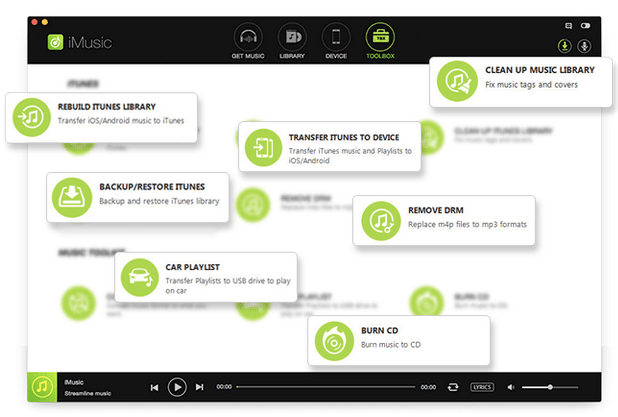Music Tag Editor is one of the best free MP3 tag editors for Mac that offer the fastest features and help you in changing and editing the metadata of audio files. Noteworthy features: In the Music Tag Editor tool, you can edit the cover photo of soundtracks as well as the tags. The best free audio editing software overall is. Audacity is an open-source product that works on Mac, Linux, and Windows devices. + Syncs tracks between devices + Exports files in MP3.
- Edit Mp3 On Mac Free Online
- Edit Audio Files Mac
- Edit Mp3 Mac Free
- Cut Mp3 Mac Free
- Edit Mp3 On Mac Free Software
I listen to podcasts. I watch videos. I watch podcasts of different languages. But more than anything I read and write. I practice languages. That’s just how I roll. And sometimes, my ramblings bring me as far as understanding English meaning of some specific kikuyu translation texts.
Frequently I want to save an audio snippet or video clip for future reference. Sure I could save the source media file, if I had unlimited disk space. But what I usually do is keep a link to the original source and text synopsis of the snippet. That both saves on storage and makes future searches for that particular item simpler.
If you’re like me, you really want the original text more than a synopsis. It take s a bit of extra effort, but I have a nice solution that uses only a Mac and open source software. Read below for instructions on converting an MP3 audio file to a text document.
The Basics of Configuring Your Mac to Transcribe .MP3 Audio
Here’s what you need:

- The original media (.mp3 file, for example)
- Soundflower. Soundflower is an application that creates a virtual audio channel and directs audio input and output to physical or virtual devices.
- Audacity. Audacity is a free application for recording and editing sounds.
- TextEdit.app. TextEdit is the default text editor/word processor that is included in Mac OS X.
Follow the instructions on the developer websites to get all of the software installed and working on your system. Once you have the software installed, the next step is to configure your Mac to use Soundflower for dictation.
- Open System Preferences and click on “Dictation & Speech”
- Select the Dictation tab
- Select “Soundflower (2ch)” as the dictation input source
- Click Dictation to “On”
- Tick the “Use Enhanced Dictation” box
Your Mac is ready for dictation. When dictation is turned on in TextEdit (or a another word processing app), your Mac will transcribe sound from the Soundflower input source.
Getting Your Audio and Text Files Ready
Next, you need to queue up the audio file in Audacity and direct output to Soundflower. For those who are new to Audacity, this will be the trickiest step. But relax, you don’t need to learn much about Audacity beyond deciding what section of sound to play and how to select the audio output from the default speakers to Soundflower.
- Launch Audacity
- Import your audio file into audacity (File–> Import, or simply drag the file into the center of the Audacity screen.)
- Click the play button to give it a listen, then click stop once your confident you have the right sound clip/transcription area.
- Choose Audacity –> Preferences –> Devices. Under playback, choose “Soundflower (2ch)” to switch the output from the onboard speakers to Soundflower. Click “OK”
With Audacity and your sound file queued up, its time to turn your attention to TextEdit.
- Launch TextEdit
- Create a “New Document”
- You may want to add some meta data to the document, such as the podcast name, episode #, publish date and URL, to go along with the key transcript.
- Position the cursor in the file where you want the transcript to appear.
And … Action!
It’s time to start audio playback and dictation transcription. Here both sequence and timing are important:
- In Audacity, move the scrubber start location 10-15 seconds before the key transcription area.
- Press “Play.” The scrubber and meters will start moving, though you won’t hear any sound. The audio signal is going to Soundflower instead of to the speakers.
- Put focus on Text edit and position the cursor where you want the transcription to begin.
- Select Edit –> Start Dictation. (or use the hot key combination, Fn Fn). A microphone icon with a “Done” button will appear to the left of your document.
- Text will start appearing in the document. It will likely lag by about 3-5 seconds.
- After approximately 30 seconds press the “done” button. Transcription will continue until complete.
This is the fun part: watch as transcription happens in real time right in the document window. Look Ma, no hands!
And now you have the original text (and most likely a few errors) as text to save. In the future you can easily search and retrieve the information.
An Excellent Alternative: Google Docs Voice Typing
While the solution above works great for offline work, one alternative with a lot of promise is Google Docs. The Voice Typing feature work much like the dictation service in Mac OS. It has the crowdsourcing advantages and privacy disadvantages of other Google products. If you’re OK with that, I found Voice Typing to do an very good job with accuracy and it can go longer that Mac OS dictation.
To use Google Voice Typing, follow all of the steps above with Soundflower, Dictation preferences and configuring Audacity. Instead of using TextEdit, you’ll want to start the Chrome browser and create a Google Doc. Once you are in document, Select Tools –> Voice typing
The user interface and process of starting and stopping transcription is the same as with TextEdit.
Dictation and Transcription Limitations
This process sets you well on you way to the goal of a high fidelity audio transcription. But it will be short of perfect. Here’s what you can do to go from good to perfect:
- Understand that Mac OS dictation transcription works for a maximum of 30 seconds at a time. If you need longer, you may want to use an alternate technology such as Dragon.
- Audio playback needs to start before dictation/transcription begins in TextEdit. TextEdit needs to be in focus for dictation to work. If you set the Audacity scrubber a few seconds ahead of target snippet, you’ll be fine.
- Transcription cannot intuit punctuation. You’ll need to add that after the fact.
- If you have multiple speakers or a noisy background, you may need to complete one additional step of creating a pristine audio file to work from. This can be done by listening to the sound through headphones and speaking the text into an audio recorder. Use the recording of your voice to drive the transcription.
It is well known that MP3 is a lossy audio format, but sometimes you still need a MP3 compressor for your device. MP3 compression means creating extra space and storing more files. Today, we have become comfortable to listen to music and audio files on mobile device, such as iPhone, Android phone or tablet. Even though manufacturers continuously expand the storage capacity, it cannot catch up the users' demand. Alternatively, we have to reduce the size of media files. This article identifies and shares top 7 best MP3 compressor applications for Windows 10/8/7 and Mac OS X/11/12.
Part 1: The Best MP3 Compressor across Platforms
When compressing MP3 files, you may focus on several things, like output quality, ease to use, and more. AnyMP4 Video Converter Ultimate is a powerful MP3 compressor for both Windows and Mac. It offers multiple ways to compress media files.
Pros
- 1. Compress MP3 by splitting long audio files into clips.
- 2. Adjust bitrate and other options to make smaller MP3 file size.
- 3. Keep the original audio quality as much as possible.
- 4. Compatible with Windows 10/8/7 and Mac OS X/11/12.
- 5. Batch handle MP3 files at the same time.
Cons
Edit Mp3 On Mac Free Online
- After the free-trial, you need to purchase the MP3 compressor.
All in all, Video Converter Ultimate is the easiest way to compress MP3 on PC and Mac computer.

How to Compress MP3 Quickly
Step 1: Install the best MP3 compressor
Download and install the best MP3 compressor on your PC. There is a dedicated version for Mac. Then launch it and click the Add Files button to import the MP3 files you want to shrink.
Step 2: Split large MP3 files
If the MP3 file is very long, you'd better to split it into several clips. That can speed up the process of transferring and sharing. Click the Cut menu on the top ribbon to open the Clip window. Then click on the timeline and hit the Split icon to divide it into two clips. Hit OK to confirm it and go back to the home interface.
Step 3: Compress MP3 by adjusting bitrate
Click the drop-down button of Convert All to and select MP3 as the output format. Click Custom Profile icon next to MP3 format to open the Profile Settings dialog. Then adjust the Bitrate and Sample Rate to compress MP3 further. Finally, hit Create New and then Convert All button to compress MP3 files.
Not only MP3 audio files, it also supports compress the MP4 files on your computer.
Part 2: Top Free MP3 Compressor Software
Top 1: Monkey's Audio
Monkey's Audio is a fast audio compressor for Windows 10/8/7/XP/Vista. It is completely free of charge and easy to use. If you prefer to freeware with the simple interface, it may be a good option.
Pros
- 1. Highly optimized and efficient on MP3 compression.
- 2. Compress audio for most popular media players.
Cons
- 1. This MP3 compressor is not available to Mac.
- 2. It uses a lot of CPU when working.
Top 2: Audacity
Audacity is a popular audio solution for a wide range of platforms including Windows, Mac and Linux. As an open-source project, this MP3 compressor is free of charge, no matter you are using a new or old computer.
Pros
- 1. Integrate a MP3 compressor with several options.
- 2. Compress a recorded or an existing MP3 file.
- 3. It also optimizes the MP3 files up to 320kbps.

Edit Audio Files Mac
Cons
- 1. This MP3 compressor is difficult to master.
- 2. It may contain virus if you get it from unsecure site.
Top 3: Freemake Audio Converter
Freemake Audio Converter is not only a media file converter, but also able to compress MP3 files on Windows 10/8/8.1/7/Vista. The freeware is a good option to compress your MP3 files if you have limited budget.
Pros
- 1. Batch compress multiple MP3 files quickly.
- 2. Support a wide array of multimedia formats.
- 3. Include presets to convert and compress MP3.
Cons
- 1. The free version can only handle MP3 files less than 3 minutes.
- 2. It does not include audio editing features.
Part 3: Best MP3 Compressors Online
Top 1: You Compress
https://www.youcompress.com/mp3/
As its name said, You Compress allows you to compress MP3 audio files online. It does not require you to install software while compressing MP3. So, it is a convenient way to compress audio for most popular media players.
Pros
- 1. One-click to reduce file size of a MP3 file.
- 2. Only compress file size but not damage audio quality.
- 3. No limitations on how many files to process daily.
Cons
- 1. This MP3 compressor does not offer any custom options.
- 2. It cannot decrypt protected MP3.
Top 2: MP3Smaller
http://www.mp3smaller.com/

MP3Smaller is a good starting point to compress MP3 files online, though you have to endure some downsides, such as file size limit. If you only have several small audio files to compress, you can use this web app for free.
Pros
- 1. Upload a MP3 file from your hard drive for compression.
- 2. Offer ten presets to compress MP3 quickly.
- 3. Not require registration or login.
Cons
- 1. The MP3 compressor can only handle one MP3 per time.
- 2. You can only compress a MP3 up to 150MB.
Top 3: Online Audio Converter
https://online-audio-converter.com/
Online Audio Converter is an audio tool of 123APPS, which is available to almost all web browsers including Google Chrome, Firefox, Safari, etc. Though it is an online MP3 compressor, it is even better than some desktop software.
Edit Mp3 Mac Free
Pros
- 1. Absolutely free to use online.
- 2. Upload MP3 files from computer, Google Drive, Dropbox or URL.
- 3. Adjust quality and bitrate to shrink audio file size.
Cons
Cut Mp3 Mac Free
- 1. You have to view ads on the MP3 compressor page.
- 2. It cannot process copyright protected MP3 files.
Conclusion
Edit Mp3 On Mac Free Software
Based on our review above, you should master at least 7 MP3 compressor applications to create smaller file size of MP3. They all have unique benefits and advantages. Audacity and Freemake Audio Converter, for example, are freeware for compress audio files on computer. Best online MP3 compressors allow you to do it without installing any software. If you do not want to lose much audio quality, AnyMP4 Video Converter Ultimate can meet your need. More questions? Write them down in the comment area below.



